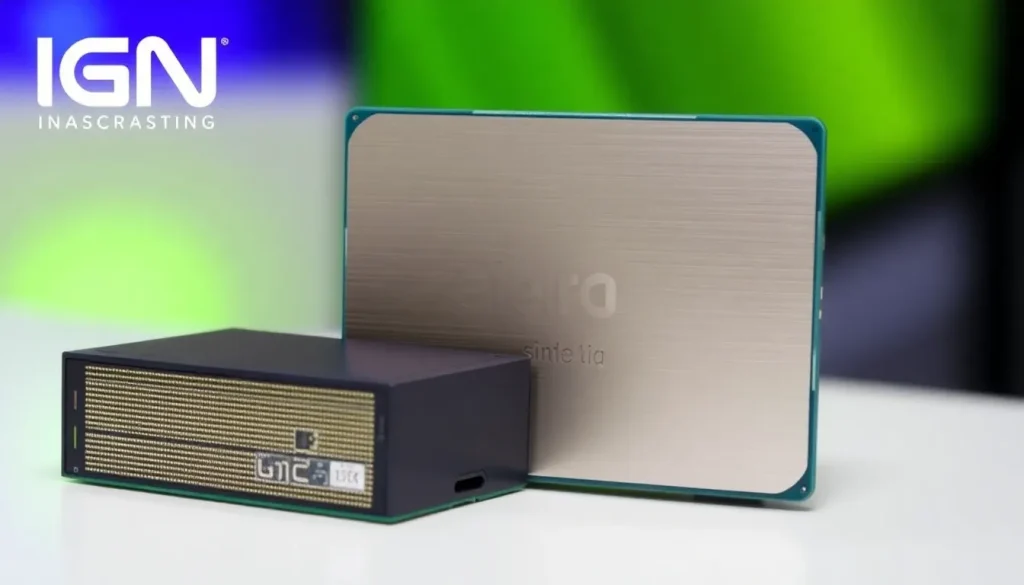Intel's Arc GPUs End Soon, B770 Underwhelming; Future is APU with NVIDIA

The landscape of graphics processing units (GPUs) has been intensely competitive, especially with the emergence of Intel as a player in the market. When Intel launched its first Arc GPUs in 2022, many anticipated a significant shift in the dynamics of graphics technology. However, as new information surfaces about their upcoming Battlemage B770, concerns about performance and relevance arise, suggesting that the future may not be as bright for Intel's GPU aspirations.
With the release of the Arc series, Intel aimed to challenge the dominance of NVIDIA and AMD in the GPU market. However, despite the initial excitement, the company struggled to achieve substantial sales or market penetration. The anticipated second chance with the Battlemage series appears to be fizzling out, especially with the latest updates indicating potential shortcomings in specifications and performance.
Intel's Battlemage B770: No PCIe 5.0 Support and Performance Issues
Intel's first generation of Arc Alchemist GPUs had a lukewarm reception, primarily because their performance was only comparable to NVIDIA’s RTX 3060, but at a lower price point with more memory. However, they suffered from driver issues and inconsistent performance across various games. While improvements were made over time, this was not enough to boost sales significantly.
The introduction of the Battlemage series, particularly the B770, has been scrutinized further, revealing a troubling trend. According to a recent video by Moore's Law is Dead, further details about the B770 have emerged, confirming that it will not support PCIe 5.0 and will face stuttering issues due to driver performance.
- Specifications of the Arc B770: The B770 retains 32 Xe2 cores, 256 bits, 20 Gbps GDDR6, and DisplayPort 2.1.
- Performance Expectations: While performance may be on par with the RTX 4070, the anticipated frame pacing issues could result in significant stuttering during gameplay.
- Market Position: The lack of PCIe 5.0 support may place the B770 at a disadvantage compared to competing models from NVIDIA and AMD.
As the gaming community eagerly awaited the B770's release, these revelations have dampened enthusiasm. The initial hopes for Intel's return to dedicated GPUs have begun to fade, with many wondering if the company can recover from this setback.
Disinterest from AIBs in Intel's New Arc GPUs
Another significant concern surrounding the B770 and its counterparts is the apparent disinterest from AIB (Add-In Board) partners. Reports indicate that AIBs are prioritizing AMD and its RDNA 4 architecture over Intel's offerings, signaling a shift in focus that could leave Intel's GPUs struggling for support.
The B770 is not the only card in the Battlemage lineup. The G21 model is also set to be released, featuring 20 Xe2 cores and a 192-bit memory bus. However, much like the B770, the G21 will also miss out on PCIe 5.0 support, further diminishing its appeal.
- G21 Specifications: 20 Xe2 cores, 192 bits memory bus, DisplayPort 2.1.
- Performance Expectations: Comparable to RX 7600 XT, but lacking in modern technology.
- Market Timing: The desktop versions of these GPUs are expected in Q4 2025, but demand is projected to be low.
With AIBs signaling their preference for AMD's products, it raises questions about the viability of Intel's GPU strategy. This disinterest could lead to a lack of availability and support for Intel's GPUs, making it increasingly challenging for them to compete in the market.
The Future of Intel's GPU Efforts: A Shift Towards APU Development
As Intel navigates these challenges, there is speculation about the company's future direction in the GPU space. The recent acquisition of a 5% stake by NVIDIA in Intel may provide a glimmer of hope. This partnership could pave the way for Intel to pivot away from dedicated GPUs and focus on developing more integrated solutions, particularly APU (Accelerated Processing Unit) technologies that combine CPU and GPU capabilities.
Recent leaks suggest that Intel's upcoming Panther Lake architecture has been dubbed "Pathetic Lake" due to expected poor performance, especially concerning integrated neural processing units (NPU) and APU drivers. This has raised alarm bells within the industry about Intel's ability to compete effectively.
- Potential Benefits of the NVIDIA Partnership: Collaboration could lead to improved iGPU integration in Intel CPUs.
- Market Forecast: AMD may maintain dominance until at least late 2026, capitalizing on Intel's current struggles.
- Future APU Developments: There is hope for the creation of "very powerful" APUs through this collaboration, but implementation will take time.
While Intel's immediate future in the dedicated GPU market appears bleak, a shift towards APU development could reinvigorate its product lineup. As the company adapts to the evolving landscape, the collaboration with NVIDIA could yield significant advancements that might enhance Intel's competitiveness in the years to come.
For those interested in the latest updates, a recent video discusses the implications of Intel's GPU strategies and their potential future developments:
In conclusion, while the initial foray into dedicated GPUs has not gone as planned, the ability of Intel to adapt and innovate in the evolving tech landscape remains to be seen. The focus on APU development, bolstered by strategic partnerships, may offer a sustainable path forward in a highly competitive industry.




Leave a Reply